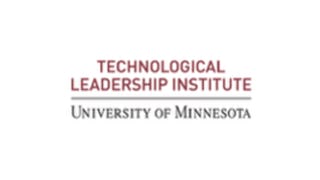This course presents a powerful design tool, overall fabrication process flows and emerging trends in the Micro technology industry. Finite Element Analysis is a computational tool that design teams use to build models and simulate parts or whole systems. FEA has been introduced with the high business impact use cases, and theoretical background. Integrated CPU (computational processor unit) fabrication flow and its evolution over the past decades is covered. Finally, emerging technologies and trends in both compute processor chips and MEMS are presented.



Modeling, IC Processes and Emerging Microtechnology
This course is part of Introduction to Semiconductor and MEMS Fabrication Specialization


Instructors: Rama Prasad
Access provided by The Adult Learning Department at DCPL
Skills you'll gain
Details to know

Add to your LinkedIn profile
8 assignments
August 2025
See how employees at top companies are mastering in-demand skills

Build your subject-matter expertise
- Learn new concepts from industry experts
- Gain a foundational understanding of a subject or tool
- Develop job-relevant skills with hands-on projects
- Earn a shareable career certificate

There are 3 modules in this course
This Module will introduce the field of Finite Element Modeling and Simulation (FEA - Finite Element Analysis) as it is practiced in the development and fabrication of MEMS devices and other semiconductor devices. The first section will cover the benefits of using modeling and simulation for product development and manufacturing control. The second section of this module will go into the governing equations capturing the physics of operation of the devices in this sector of Micro Technology. This section also covers – the concept of discretization and approximation theory. Complex partial differential equations of the governing equations are converted to a computer solvable set of linear algebraic equations using approximation theory. Finally, the limitations and shortcomings of FEA is presented, this prepares the students for - factors to consider when using FEA successfully as a powerful and efficient tool.
What's included
3 videos5 readings3 assignments1 plugin
This module puts the individual micro fabrication process steps (covered in earlier courses) in an integrated process flow or sequence, to fabricate a complete IC (integrated circuit) wafer. A simple example of the early 3 micro m CMOS circuit chip process flow is walked through. The market specification drivers of the IC circuit is touched upon.
What's included
3 videos5 readings3 assignments1 plugin
Semiconductor industry is a uniquely remarkable industry that has experienced tremendous increase in computation capability, decrease in chip size, decrease in energy consumption and decrease in cost, all at the same time. This transformational industry continues to see Moore’s law evolve in new ways like parallel algorithms in the software, environment interaction device types (MEMS) built from semiconductor materials and fabrication processes, and quantum computing. The Microtechnology ecosystem is strong within USA and includes the leading R&D entities located across the country. There are industry associations and networks that serve this community.
What's included
2 videos4 readings2 assignments
Earn a career certificate
Add this credential to your LinkedIn profile, resume, or CV. Share it on social media and in your performance review.
Offered by
Why people choose Coursera for their career




Explore more from Physical Science and Engineering

University of Minnesota

University of Minnesota

University of Minnesota

University of Minnesota

